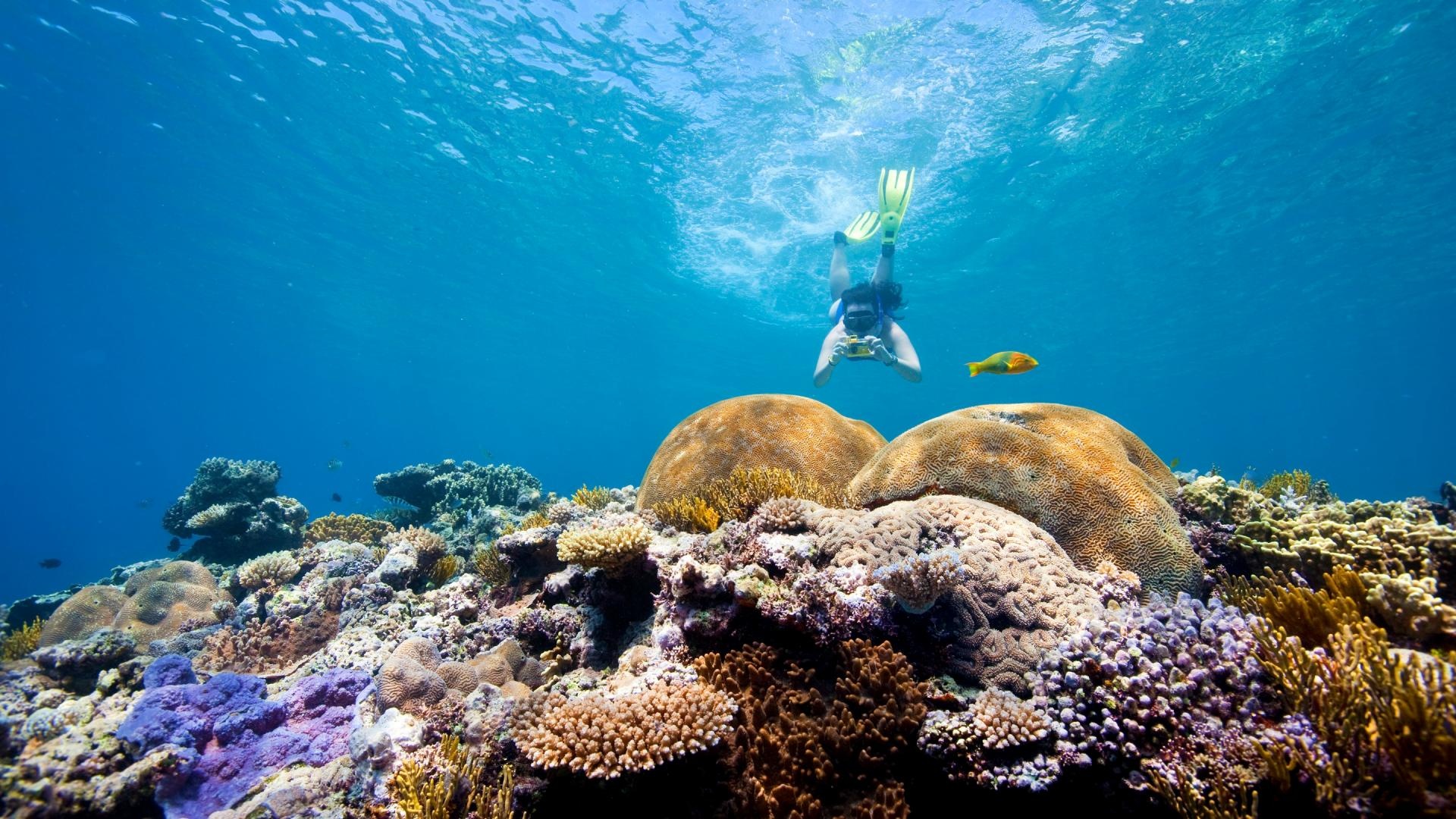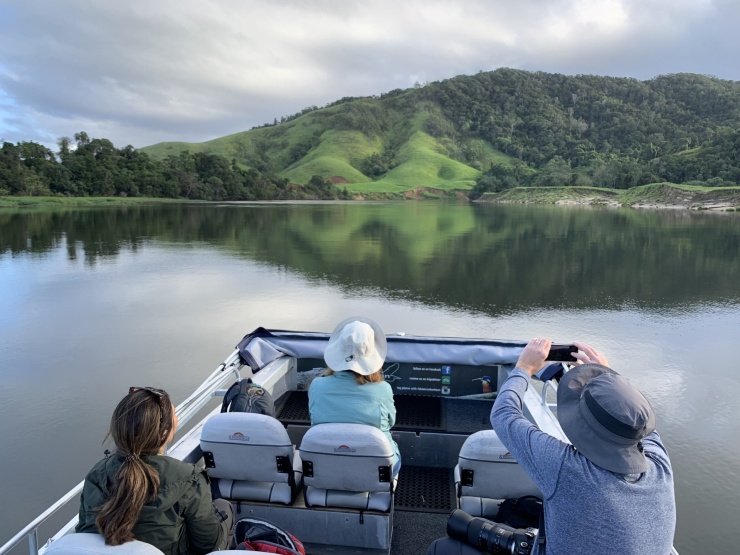Daintree River Dawn Cruise
The Daintree Boatman Dawn cruise provides the ideal conditions to see the Daintree River system and wildlife.
You will have the opportunity to see a wide variety of species including the Little Kingfisher, Papuan Frogmouth, Black Bittern, Great-billed Heron, Saltwater Crocodile, Green Tree Snake, Water Dragon and butterflies.
Our are professionally conducted in a small, comfortable, open vessel which enables a quiet, intimate exploration of the river with close views of target birds and wildlife. Cruises explore the narrow, shallow tributaries of the Daintree River, where the big boats can’t go."
Departure Point
Daintree River cruises depart from the public boat ramp at Daintree Village, 100 metres downhill from the Daintree Village Hotel. If using a navigation tool, nearest address is 1 Stewart St, Daintree Village. Transit time from Port Douglas is 45 minutes.
Dawn Cruise Departure times
April, May, June, July, Aug: 7.00 am
Sept, Oct, Nov, Dec, Jan: 6.30 am
Duration
2 hours
What will I see?
Crocodiles, tree-snakes, water dragons, butterflies and highly sought-after rare birds are seen on most tours. Key target birds include Great-billed Heron, Little Kingfisher, Azure Kingfisher, Papuan Frogmouth, Black Bittern, Wompoo Fruit-dove and Shining Flycatcher amongst others.
An average of 40 wildlife species are seen or heard per cruise. A wildlife checklist is available on board for guests to use. Birds seen on cruises are regularly reported to the worldwide bird reporting website eBird. Follow the link to research what has been seen on recent cruises.
You will also see the scenery of the main river and narrow tributaries including the very scenic area under Barratt Creek Bridge. Key flora is listed on the checklist and these will be identified on the cruise.
Drive times
From Cairns: 1 Hour & 40 Minutes
From Port Douglas: 45 minutes
From Daintree River ferry: 15 minutes
From Julatten 55 minutes
From Mossman 30 minutes
When is the best time of year to see wildlife?
It depends on what you want to see. A good example is crocodiles. They are most commonly seen during the cooler months sun-baking on the bank particularly during a low tide.Great-billed Herons and Kingfisher also tend to be more reliable on a low tide.
Little Kingfisher tends to be better during the cooler months. Black Bitterns are a summer migrant and are only seen during the warmer months. Paradise Kingfisher are only present in the summer but are more commonly heard than seen.
Papuan Frogmouth are a little more likely during the second half of the year, typically nesting about October. To see what has been seen on recent cruises click on the eBird link.
What effect do the tides have?
Tides can also have an effect on the species likely to be seen. Wildlife-spotting is better on a lower tide. Tide is as important as time of the day with wildlife better on a lower tide in the afternoon than a fuller tide at dawn.
Lower tides are particularly beneficial for spotting crocodiles and kingfishers. Other birds such as Great-billed Heron, Shining Flycatcher, egret, ibis are all more likely when the tide is low.
What to bring
Cameras, binoculars and a jacket. For those without binoculars there are some aboard to borrow. Bug spray is usually not necessary.
Sunscreen is recommended for cruises in sunny conditions. Guests are welcome to bring a beverage or two for late afternoon cruises if they wish.
Where can we have breakfast?
The Daintree Village Hotel, just 100 metres from the boat ramp is open for breakfast and coffee immediately after the cruise. Rob’s Pie Shop also provides a good variety of pies and other meals.
Toilets
There is a toilet block 100 metres from the public boat ramp. It is located on the last corner before turning down to the river, directly across the road from the Daintree Village Hotel. For Mossman River cruises there is a public toilet block on the Newell Beach Esplanade about 1 kilometre from the cruise departure point.
DAINTREE RIVER WILDLIFE
Azure Kingfisher
The Azure Kingfisher is the most commonly seen & photographed kingfisher on the Daintree River. It is common along creeks and rivers in northern and eastern Australia. It is seen on 99% of cruises, sometimes within metres.
Little Kingfisher
The Little Kingfisher, at just 13cms, is the second smallest kingfisher in the world. It inhabits waterways through northern Australia and PNG. It is most easily observed on lower tides during the cooler winter Dry Season.
Great-billed Heron
The Great-billed Heron is the most sought-after bird on the river. This secretive bird is a resident of rivers in northern Australia and South-east Asia. Lower tides offer the best chance of observation. It is seen on about 90% of cruises.
Saltwater Crocodile
The Saltwater Crocodile, aka Estuarine Crocodile, is the world’s largest crocodile and world’s heaviest reptile. In good conditions, 3 or 4 crocs should be seen on a river cruise. Best conditions are a low tide on a warm winter’s day.
Papuan Frogmouth
Papuan Frogmouth perch motionless during the day relying on their mottled grey plumage to look like a branch and avoid detection. They are found on most cruises particularly during the second half of the year.
Shining Flycatcher
The Shining Flycatcher is sexually dimorphic. The female is cinnamon brown and white whilst the male is black turning shiny blue in direct sunlight. They are seen on 99% of cruises. Leaden Flycatcher are also present on the river.
Green Tree Snake
The Green Tree-snake, aka Common Tree-snake, is a non-venomous colubrid commonly found on cruises, particularly on warm winter mornings. Common prey items include frogs. Amethystine Python are also found less frequently.
Water Dragon
The Eastern Water Dragon, superficially similar to an iguana, is a common insectivorous reptile regularly found on Daintree cruises. They are common on the east coast of Australia. Males are larger and more colourful.
Black Bittern
The Black Bittern is a highly sought-after migrant arriving from South-east Asia in October to nest over the summer in riverine Water Gums. Striated Herons, also present, are similar but smaller with a dark cap.
Wompoo Fruit Dove
The Wompoo Fruit-dove is quite commonly seen sitting on tiny untidy nests. Particularly in winter they can be seen raiding fruiting trees such as Blue Quandong, often in association with Pied Imperial Pigeons and Topknot Pigeons.
Spectacled Fruit Bat
Spectacled Fruit Bats play a vital role in maintaining the health of the rainforest. Sometimes they are seen at roost during the day, more often they are seen emerging at sundown for a busy night foraging for rainforest fruit.
Amethystine Python
Amethystine Python are occasionally seen on cruises. They are commonly 2 to 3 metres in length, sometimes more. They are often found lurking near the roosts of their favourite prey items, Cattle Egrets and Flying Fox.
Reviews
An great flora and fauna cruise along the Daintree. Murray was a wealth of knowledge.
Daintree River cruises depart from the public boat ramp at Daintree Village, 100 metres downhill from the Daintree Village Hotel. If using a navigation tool, nearest address is 1 Stewart St, Daintree Village. Transit time from Port Douglas is 45 minutes.





